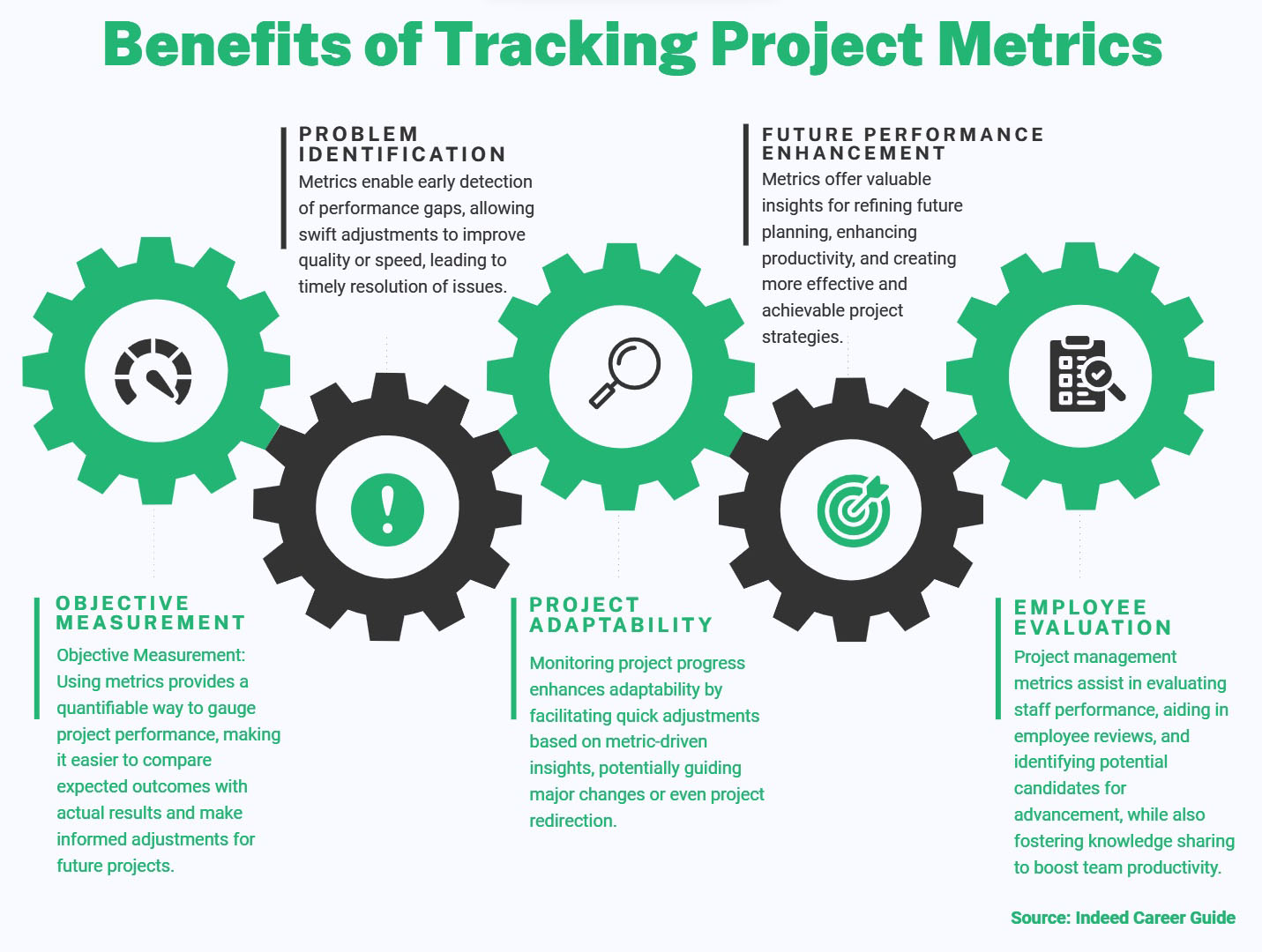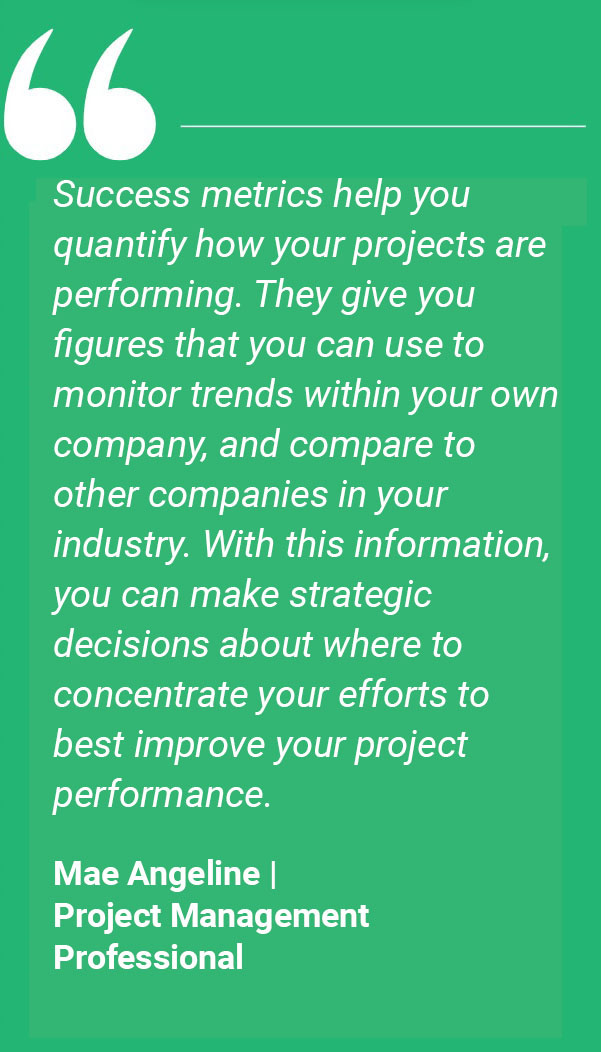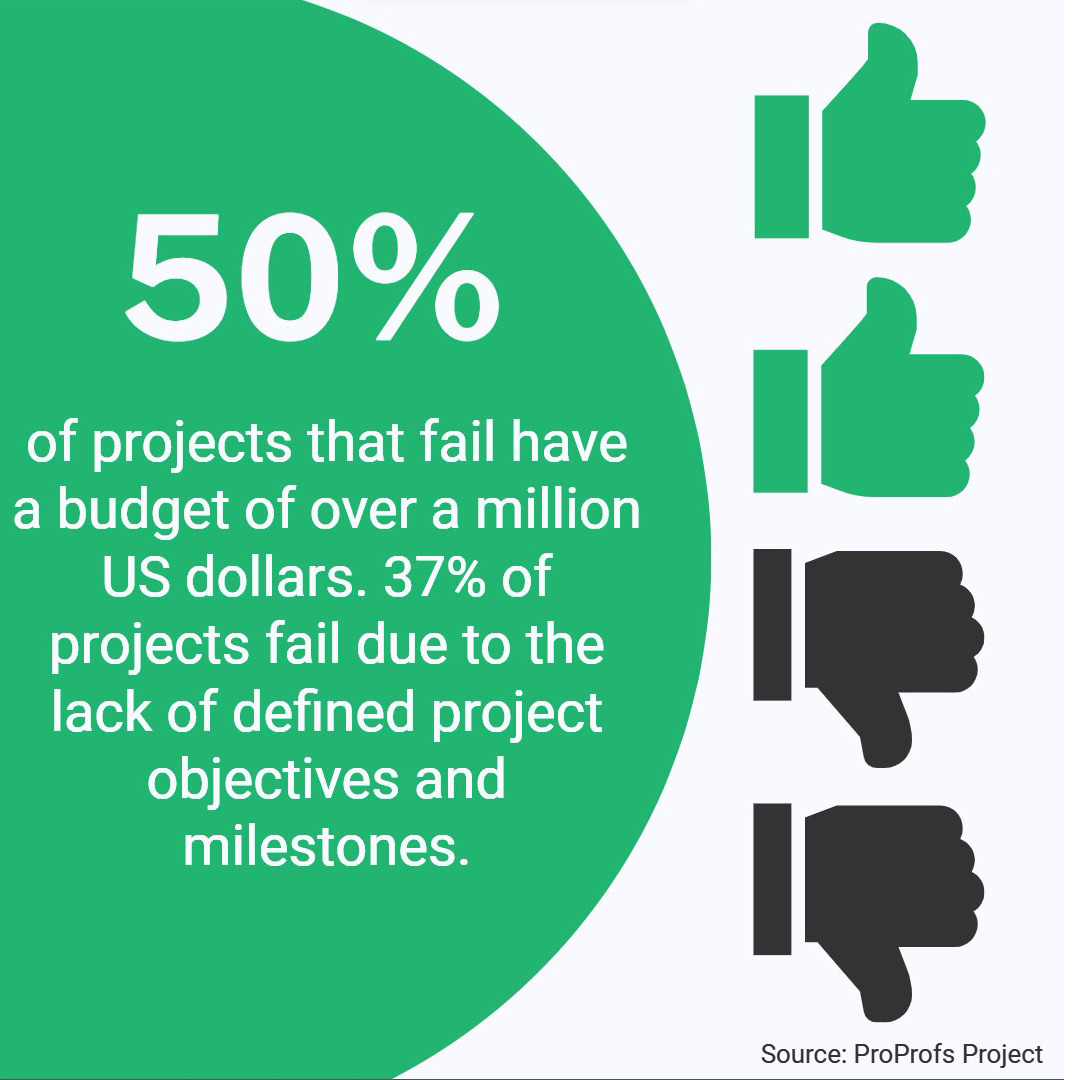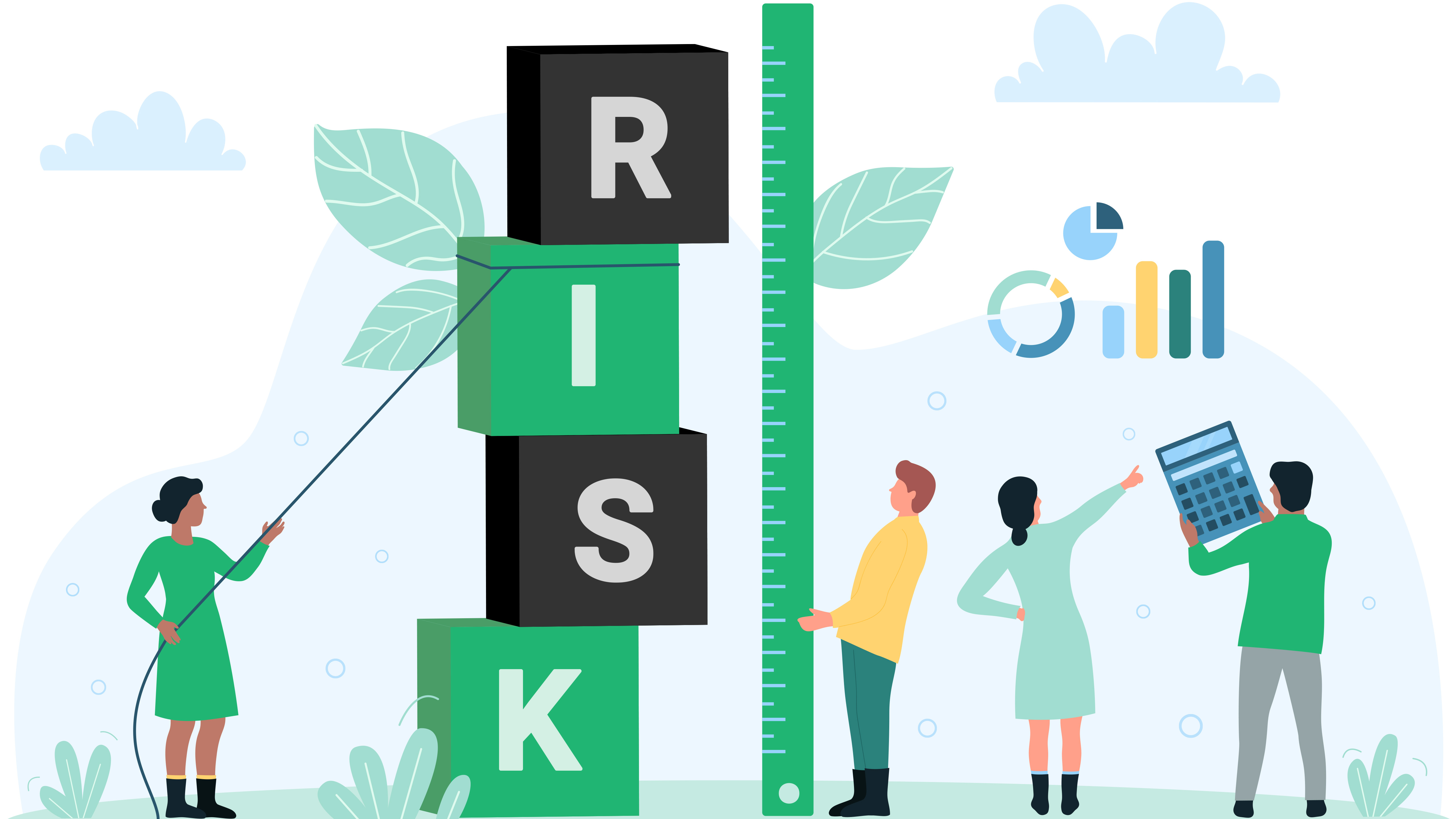
As a project leader, juggling timelines, budgets, teams, and managing stakeholder expectations simultaneously can be truly challenging, right? Did you ever stop to think that achieving project success lies in meticulous measurements and assessments—project metrics? It is quite remarkable how project management metrics can make or break your project outcomes. Consider project measures as an early warning system, alerting you to potential project disasters before they even happen. In other words, metrics are the north star of your project execution process and provide crucial insights into the project's progress, health, and overall impact. In this article, let us explore project performance metrics, why they are essential, how to create them, and the benefits they bring to your project.
What Are Project Metrics?
Do you have an in-depth understanding of your project's health? If not, maintaining up-to-date awareness of your project's advancement, whether it is ahead of schedule or falling behind, is imperative for pre-emptively addressing potential challenges and impediments. It is here that metrics for project management play a critical role. Project management metrics are essential measures used to monitor the project's performance. Successful project metrics enable you and your team to measure progress toward goals. It also directs the employees' efforts toward achieving the set objectives. Additionally, these project metrics play a crucial role in identifying deviations from anticipated outcomes, enabling timely corrective actions to be taken.

Are Progress Metrics Necessary for Your Projects?
The Arras People Project Management Benchmark report highlights that nearly 60% of project leaders run between two and five projects. Nearly 11% run between six and ten projects. 15% run more than ten projects. What is more staggering is that 55% of organizations do not have access to real-time project KPIs, according to the Wellington PPM Intelligence study, leading to multiple failed projects and unhappy stakeholders. As teams and projects grow in scale and intricacy, relying solely on qualitative assessments becomes challenging. Therefore, the need for project management metrics arises from the complexity and uncertainty inherent in projects. Metrics offer objectivity and precision, ensuring decisions are grounded in data rather than subjective opinions. Furthermore, they empower you to anticipate problems, allocate resources efficiently, and adjust strategies when needed.
How Do You Choose the Right Project Metrics?

Every project is unique. Therefore, how you evaluate your project's performance vastly differs from others. You must carefully consider your project goals and stakeholders' expectations before creating effective project metrics. How do you engineer key project metrics to suit your organizational needs and align with your strategic objectives? Developing performance metrics in project management is not about measuring every possible aspect but rather focusing on the most relevant indicators. Some critical steps in engineering project metrics include:
- Define Objectives: Clearly define the project's objectives and goals. Metrics should align with these goals and provide insight into their achievement.
- Select the Appropriate Project Metrics: Choose meaningful and relevant project metrics for the project's success. For example, if time-to-market is crucial, delivery time and speed metrics would be essential.
- Collect Reliable Data: Metrics are only as good as the data they are based on. Ensure that data collection methods are accurate and consistent.
- Set Benchmarks: Establish benchmarks or targets for each metric to gauge whether the project is on track.
- Regular Monitoring: Continuously monitor and analyze the metrics throughout the project's lifecycle. This helps in detecting deviations early and taking corrective actions.
Leaders, Are You Tracking These Project Metrics?
Efficiency
Your company wants you to work smart, not just hard. Organizations aim to enhance productivity and stimulate business growth through effective project leadership. And you play a pivotal role in achieving this goal by optimizing resource utilization. The key lies in achieving the desired outcomes while minimizing resource consumption. To measure productivity, there is a formula:
Efficiency = Units of Input/Units of Output
Gross Profitability
Beyond solid client relationships, profitability is a paramount concern for businesses. The 'gross profit margin' tells you if you are making more money than you are spending. Calculate gross profitability using the formula:
Gross Profit Margin = (Total Profit - Total Costs) / 100
Return on Investment (ROI)
Have you thought of outsourcing some portions of your projects to save money? Outsourcing non-core projects is a strategic move. But here is the catch: You must make sure those investments pay off. That is where ROI comes in. Third-party companies must deliver projects within budget and time constraints. Balancing investment with returns is essential for project success. Calculate ROI by using the following formula:
ROI = (Net Benefits / Costs) x 100
 Employee Contentment Score
Employee Contentment Score
Happy employees mean a happy project. Therefore, ensure a favorable work environment to boost employee efficiency. Content employees demonstrate higher productivity. Do you want to know how happy your team is? Formula to calculate employee contentment scores:
Employee Satisfaction Score = (Total Survey Point Score / Total Questions) x 100
Cost Variance
Measuring project success requires monitoring the cost variance. This metric highlights the deviation between planned and actual costs during a specific timeframe. Positive variance indicates cost savings, while negative variance signifies budget overruns. The formula for this is:
Cost Variance (CV) = Budgeted Cost of Work - Actual Cost of Work
Schedule Variance
Schedule Variance indicates if you are ahead or behind in getting things done. Staying on schedule ensures optimal productivity. Schedule variance is calculated as:
Schedule Variance (SV) = Budgeted Cost of Work Performed - Budgeted Cost of Work Scheduled
Customer Satisfaction
Happy clients mean a job well done. Satisfied clients contribute to business success. Measuring customer satisfaction scores (CSAT) provides insights into project quality. The formula is:
Customer Satisfaction Score = (Total Survey Point Score / Total Questions) x 100
Actual Expenditure
Actual Expenditure is all about tracking the money you have spent on a project. This project metrics enable you prevent budget overruns. Monitoring this metric is essential for overall financial health. The formula to calculate the actual project cost is:
Actual Cost (AC) = Total Costs per Time Period x Time Period
Cost Performance
Cost Performance evaluates the effective use of resources without compromising quality. This project metrics help with risk management and capital allocation. The Cost Performance Index (CPI) is calculated as follows:
Cost Performance Index (CPI) = Earned Value / Actual Costs
Earned Value
Earned Value indicates the value derived from project expenditures at a specific time. It highlights progress and assists in strategizing. Evaluating earned value helps manage deviations from the original plan. For example, imagine you are overseeing a project with a budget of $100,000 and a deadline of 12 months. Fast forward to the end of six months, and you realize that only 40% of the project is complete, not the expected 50%. This means your earned value falls short by 10%, equivalent to $10,000. Now, with this insight, you are aware that you are lagging. You would start thinking about tweaking your strategies to prevent any potential losses. It is all about adapting to keep things on track.
Stay Ahead with TrueProject's Predictive Intelligence
When it comes to project success, foresight is your best ally. That is where TrueProject steps in—a proactive SaaS solution against project pitfalls. When your project goes off track, TrueProject's interactive dashboards and reports help you get a quick overview of what needs your attention and identify potential problems. TrueProject does not just identify problems; it enables you to understand why they happened.
But what about comparing where you are with where you want to be? TrueProject's got your back there too. The solution looks at past projects to analyze your current performance. You can spot trends, compare with previous performance, and even check out your project diary entries. The TrueProject solution is not just about crunching numbers; it is about foreseeing problems, guiding you through challenges, and helping your projects stay on track.
In the intricate world of project management, project metrics serve as a beacon of clarity and control. By offering quantitative insights into project performance, risks, and potential pitfalls, project metrics empower you to proactively act on challenges, make informed decisions, and achieve project success. From assessing financial health to evaluating technical achievements, project metrics provide an indispensable toolkit for project managers and stakeholders alike. In a world where project failure rates are alarmingly high, TrueProject serves as the compass that leads to safer harbors for successful project delivery.
More information on TrueProject at trueprojectinsight.com.
 About the Author:
About the Author:
Dave Smith is the Senior Vice President of TrueProject Customer Success and Engineering. Dave has 35+ years of experience which has enabled him to lead complex, challenging IT initiatives. He specializes in the design, development, and launch of technology solutions and processes.
Endnotes:
- "5 Top Project Metrics You Need to Use Today." Saviom, June 27, 2023. https://www.saviom.com/blog/top-project-metrics-you-need/
- Indeed Editorial Team. "6 Key Metrics in Project Management and How To Track Them." Career Development. Indeed Career Guide, October 1, 2022. https://www.indeed.com/career-advice/career-development/how-to-track-project-management-metrics
- Expert Panel. "17 Metrics For Evaluating The Success Of Tech Projects And Initiatives." Innovation. Forbes, May 24, 2023. https://www.forbes.com/sites/forbestechcouncil/2023/05/24/17-metrics-for-evaluating-the-success-of-tech-projects-and-initiatives/?sh=1a3fbe9f530b
- Miller, David. "Project Management Metrics Every Manager Needs to Track." ProProfs Project, March 7, 2023. https://www.proprofsproject.com/blog/project-management-metrics/
- Miller, David. "100+ Project Management Statistics & Facts (Updated 2023)." ProProfs Project, January 6, 2023. https://www.proprofsproject.com/blog/project-management-statistics/
- Angeline, Mae. "The 5 Project Success Metrics that Matter." Project & Resource Management. Runn, Jul 28, 2022. https://www.runn.io/blog/project-success-metrics




